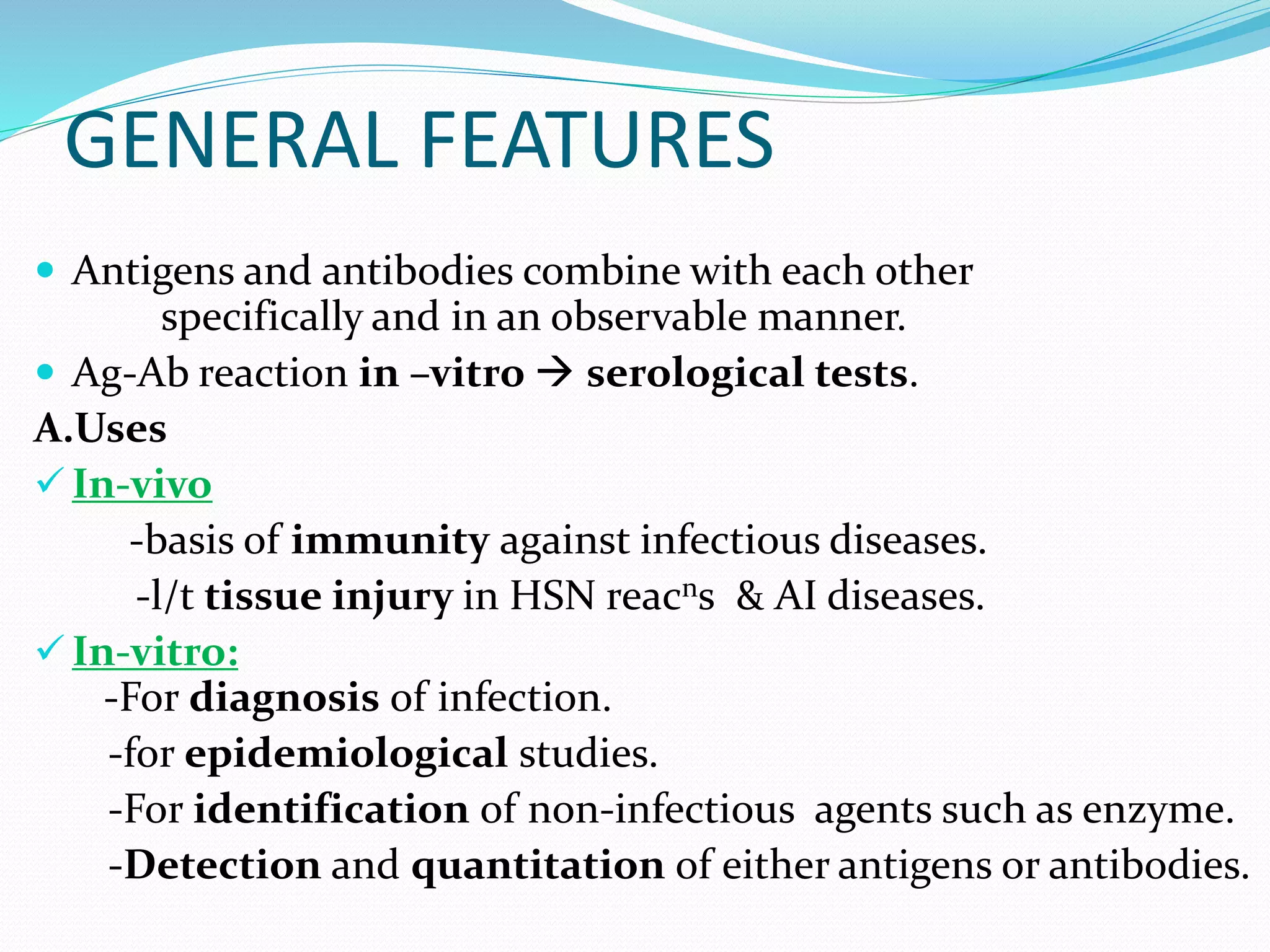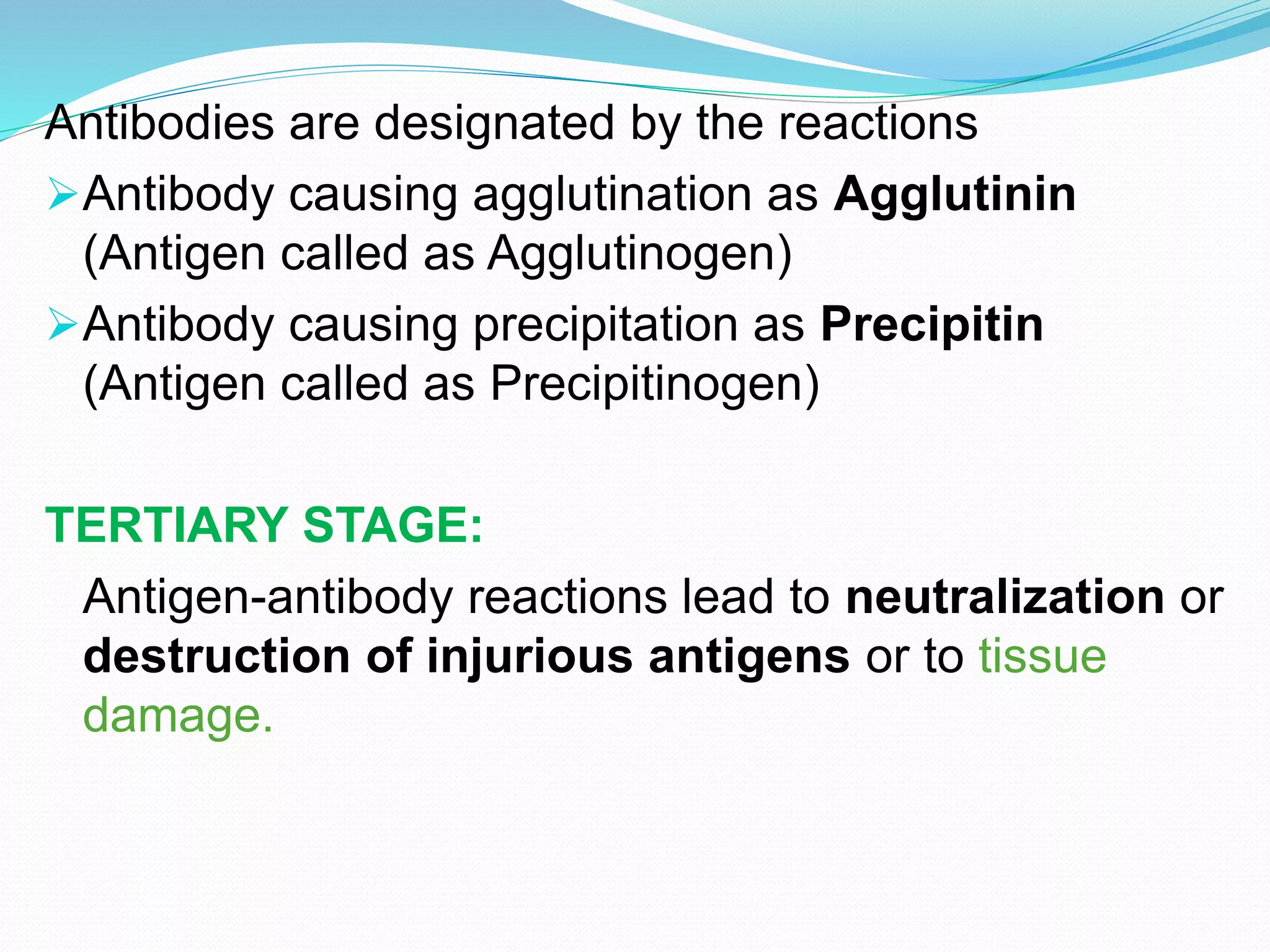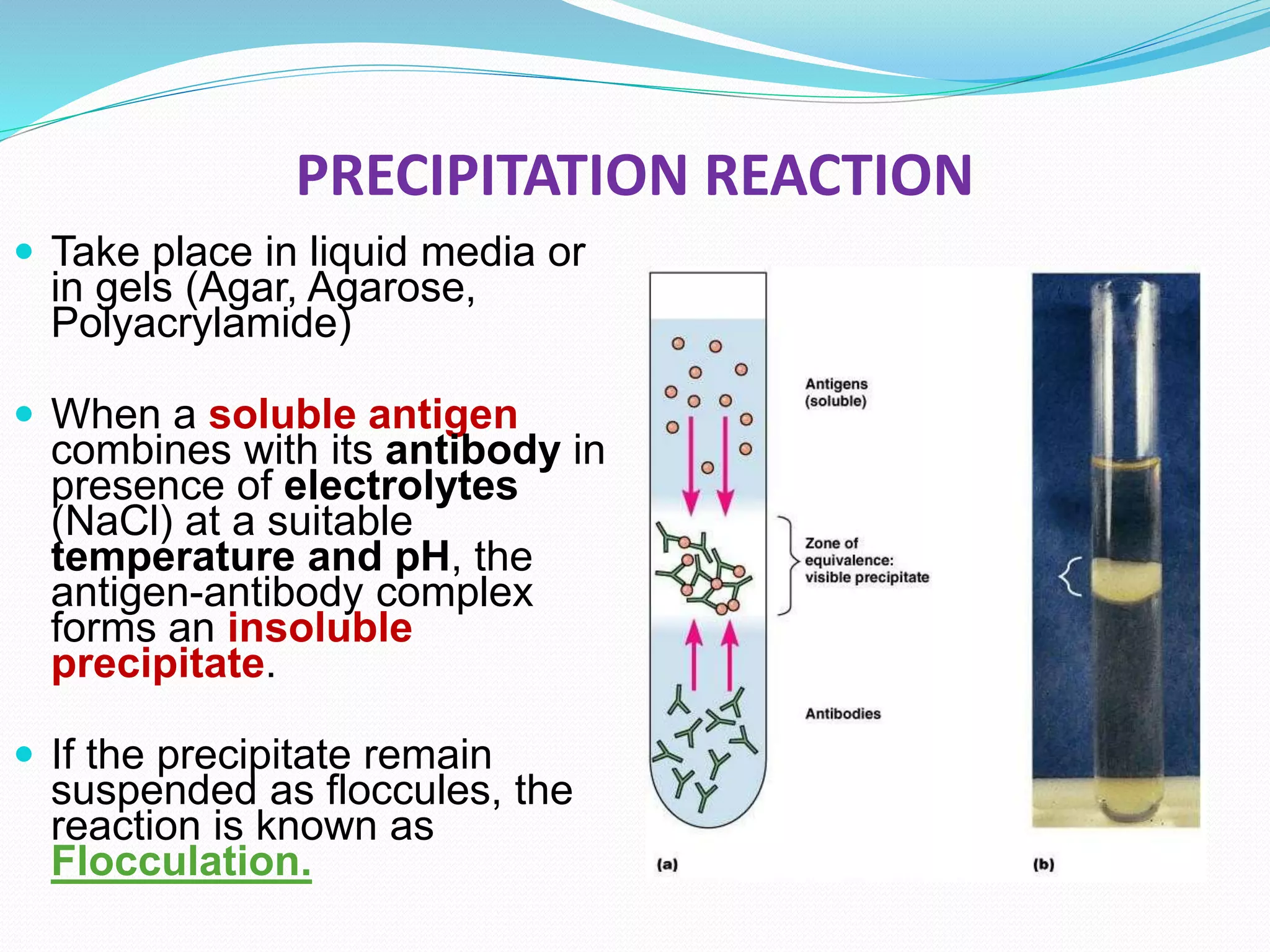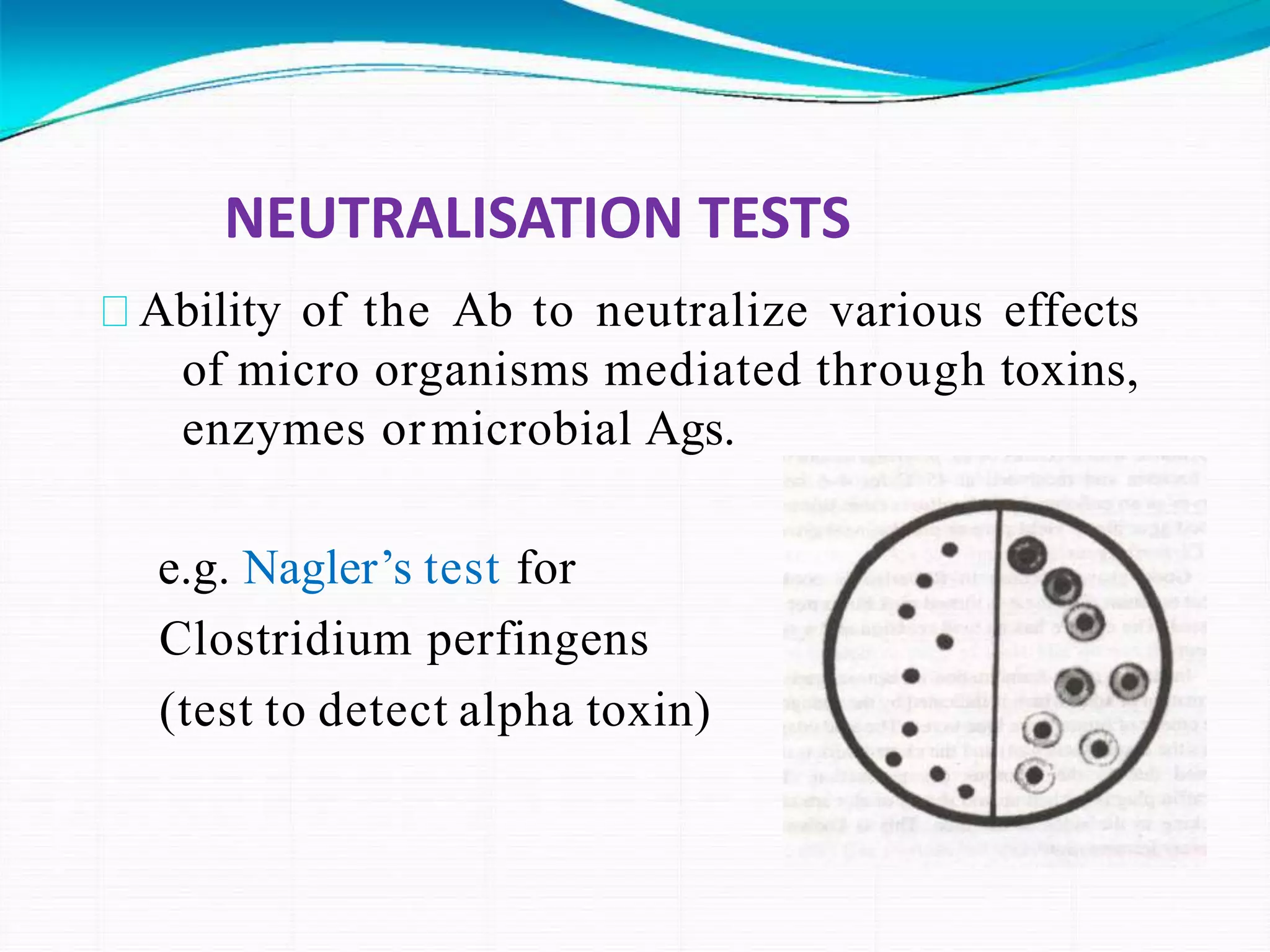The document provides an extensive overview of antigen-antibody reactions including their characteristics, measurement, and various types of tests such as precipitation, agglutination, and immunoassays. It details the stages of these reactions, their applications in diagnostics, and comparative efficiencies of immunoglobulin classes in different assays. Additionally, it covers the mechanisms of these tests and specific methodologies used in clinical settings for detecting infections and biomolecules.





























































